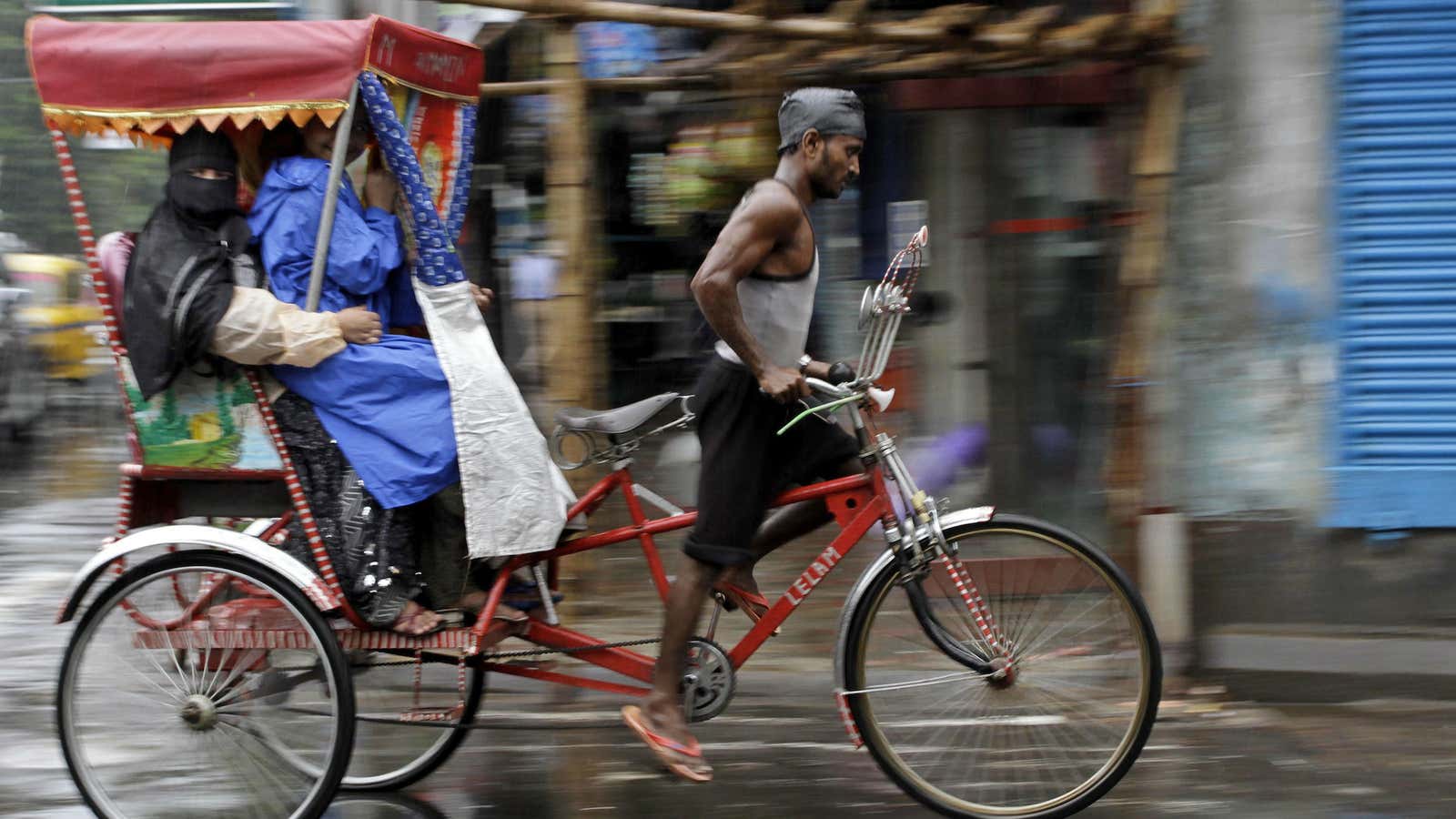Cities like New York, London and Singapore can’t say enough about the merits of bicycling for urban development. But in Kolkata, one of India’s oldest cities where bicycles, cars and rickshaws abound, the government’s plans to boost the economy include ridding the city of bicycles to make room for more cars.
Kolkata, the ancient capital of West Bengal, is often described as the city left out of India’s economic boom. Once the country’s industrial powerhouse, in recent decades it has become one of the country’s poorest with as much as a third of its population living in slums, as of 2001. Hoping to change that, capitalist pro-market reformers like Mamata Banerjee, chief minister of the state, are trying to restore the city’s economic glory by bolstering its IT industry and encouraging foreign investment.
In August, as part of those efforts, city police extended an earlier ban on the use of non-motorized vehicles to 174 roads from 38, ostensibly to help traffic congestion and improve the flow of goods and workers around the city. (The argument is that bicyclists—Kolkata has as many as 2.5 million a day—are slower than cars.) Now, in the only major Indian city where bikes outnumber cars on the road, police have started seizing bikes and fining residents on non-motorized wheels $100 rupees ($1.60). Locals in Kolkata demonstrated last week and activists in other cities have sent letters of protest to the state government, which have so far gone unanswered.
Other cities around the world have reached the opposite conclusion: Bicycles reduce traffic. The City of London is considering imposing a pedestrian-only zone (paywall); Singapore and New York have both launched bike share programs. If cars replace bicycles in Kolkata, one of the country’s most polluted cities, air pollution could worsen. Already pollution may be exacerbating the severity of monsoons for the city, according to researchers.
The policy also reflects skewed perceptions of what constitutes a modern city. The city’s original ban on non-motorized vehicles in 2008 was in part an image issue: Gaunt men tugging carts wasn’t the picture of “New India” officials wanted to project. And yet, removing affordable transportation only holds back the advancement of Kolkata’s working class and poor; most of them cycle to get to work or pull carts or rickshaws to make a living.
The real problem may be more about the size of Kolkata’s road network, not what’s on it. Only 6% of Kolkata is made up of roads, compared to 21% in New Delhi, according to an editorial in the Business Standard, an Indian business news publication. That’s a constraint on transportation that banishing bicyclists and rickshaw drivers won’t change.
